If you’ve shown an interest in the UX design field, you’ve probably conducted your own research into the topic.
It’s likely that you’ve encountered terms such as wireframes, user journey mapping, and usability heuristics.
For someone new to UX design, understanding such terms can pose quite a difficult challenge. What’s more, focusing too much on the complexities of UX design could mean you’ve missed some basic yet essential information.
Speaking of basics, that brings us to the primary focus of today’s guide – UX design basics. After reading our actionable guide, you’ll know the ins and outs of the UX design. From the design process to design principles, we’re here to help you hone your passions and become a proficient designer.
What Is UX Design?
UX design, otherwise known as user experience design, is a vital part of the creation of successful digital products.
UX design shapes the user’s experience as they interact with a product and its creator/company.
UX design focuses on the entirety of the user’s journey with the products. Ergo, UX designers will utilize empathetic research data to enhance the usability, enjoyability, and accessibility of a product.
Ultimately, effective UX design will enable the user to complete a desired action or find valuable content. Most importantly, UX design aims to solve the user’s issues.
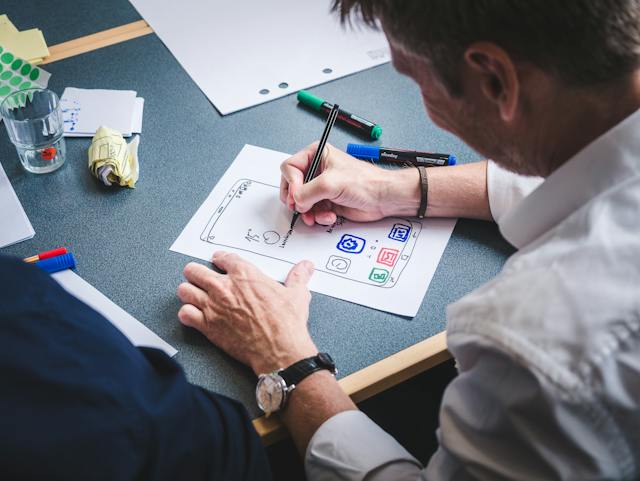
The UX Design Process
Every digital product you’ve encountered started as a UX designer’s strike of inspiration. That inspiration, then, via the UX design process, transforms into a tangible product that you and other users enjoy.
In order to create compelling digital products and services, you must know every stage of the UX design process.
Below, we’ve explored the six stages of the design process to help you become a spectacular UX designer.
Step One: Empathize
Before you design a product, you must know why users need it. You must locate your target audience and understand who they are on a psychological and sociological level.
With an empathetic understanding of your users, you can understand what desires, needs, and frustrations they have. You can also determine what a positive experience means to the people for whom you want to use your products.
Most importantly, this stage of the design process will allow you to create a user-centric design solution from the beginning. With that being said, across the design process, you should always employ your empathy.
In doing so, you’ll have a continuous flow of improvements that will only enhance your users’ experiences.

Step Two: Define
UX designers must have a well-defined plan and research goals prior to starting a design. During this preparatory stage, you’ll choose which research methods and design systems you’ll use to optimize your users’ experiences.
Above all, your predetermined research goals should illuminate what type of product your user needs. They should also reveal the potential problems the user may face within your design solution.
Needless to say, knowing your users’ problems is the first step to resolving them with your products.
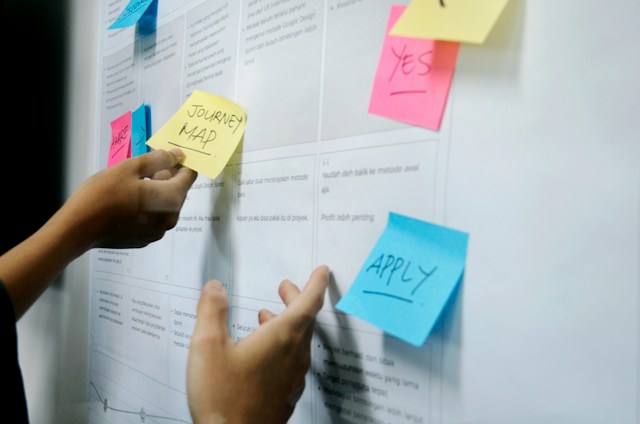
Step Three: Ideate
Ideation is an iterative process that you should consistently revisit. You’re not just ticking the boxes of your product’s design; you’re creating user-centric solutions.
Yes, you’ll create multiple solutions for the same problem to identify which one you should develop further.
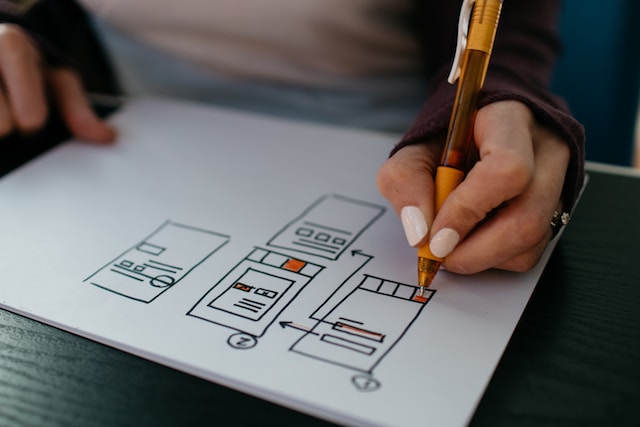
Step Four: Prototype
Now, you’re ready to start designing tangible products! In the prototyping stage, you’ll create mockups of your product to test the fundamental effectiveness of your solutions. You will recruit prospective users that represent your target user base to generate feedback.
You can then use the feedback to situate areas of improvement and design elements that resonate with your users.
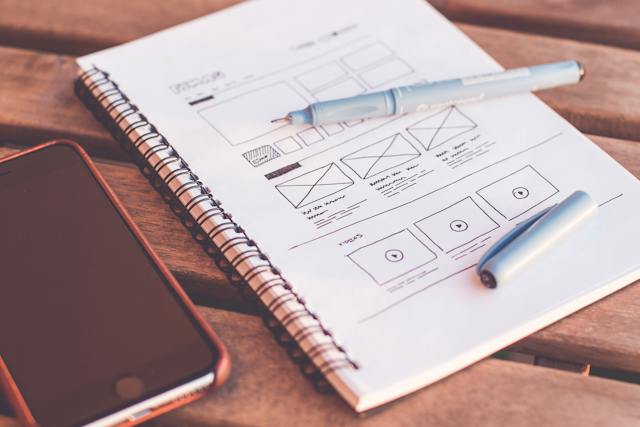
Step Five: Test
You can’t make an exceptional digital product without testing its prototypes. Testing your prototypes allows you to assess the effectiveness and enjoyability of your design solutions.
Usability testing methods will allow you to observe how your users interact with your products within their own contexts. After gathering observational, context-dependent data surrounding your users’ interactions with the product, you will then analyze it.
With your results, you can make any necessary refinements and share your work with your stakeholders.
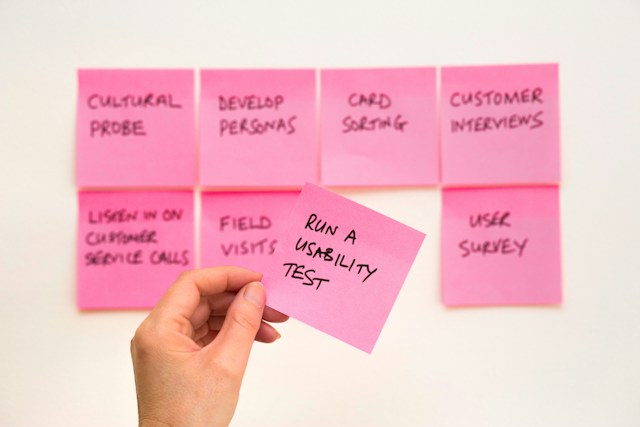
Step Six: Repeat
The UX design process is repetitive in nature. This means that once you create and implement designs, as well as gather feedback, you have to repeat these steps.
The more you iterate the design process, the more of your users’ issues you can address and resolve. The modifications you make to your product will become more meaningful, and your design solutions will become more helpful.

The UX Design Principles
Depending on where you look, you will find anywhere between five and twenty UX design principles. Seemingly, some UX designers prioritize certain design elements over others.
However, given that we’re focussing on the basics of UX design, it’s only fitting to address particular principles. Below, the principles you’ll see serve as fundamental constants of UX design. Therefore, this means that every designer should adhere to at least the following:
1. User-centricity
You know UX design as user experience design for a reason. You can’t create an exceptional user experience without users, so it’s crucial that you prioritize them during the design process.
In order to ensure your design process is user-centric, you must imbue your research with utmost empathy. Essentially, your research should put you in your users’ shoes. Through user research, you can clarify your users’ desires, needs, goals, mental models, and pain points.
It’s imperative, however, that you distinguish your target users from your assumptions as to who they are as individuals. Utilize quantitative and qualitative research to understand what your users do and why they do what they do. From this research, you can draft user personas to contextualize your users in a real-life environment.
Knowing your users’ contexts is another crucial element of user-centricity. By understanding when and where your users will use your products, you’ll anticipate moments of enjoyability and frustration.
It’s worth noting that your users’ emotional states have a significant influence on your users’ unique contexts.
For instance, let’s say you’re designing an app/site to help your users relax after a long day at work. You should take into consideration that your users may feel weary, which will impact their level of patience.
If your user interface is complex and full of technical jargon, you risk losing your users’ engagement. By employing simplicity and an easy-to-follow user interface, you’ll satisfy your users’ needs to relax.
2. Usability
Usability goes hand in hand with user-centricity. After all, you can’t create positive, empathetic user experiences if your digital products aren’t usable.
Usability governs how easy it is for your users to complete a task/satisfy their needs within your product. The importance of usability can’t be understated. Without it, your users may become frustrated with the product and abandon it entirely.
Thus, you must know what good usability looks like. Intuitive user interfaces and fluid information architecture will minimize the learning curve. In minimizing the learning curve, you’ll find that your users’ interactions with your products are seamless.
So, how do you know if you’ve made your product usable?
To determine how usable your product is, you should evaluate how effectively and accurately your users can accomplish a task. Prototyping and usability testing methods will reveal areas of improvement within your product, which you will then refine.
Tip: You should conduct usability testing at every stage of the design process in order to optimize your product. Through continuous improvements, your product will exceed your users’ expectations.
3. Consistency
Your users will use their prior experience with similar products to understand how to use yours.
Even if you have a strong desire to reinvent the wheel, it’s immeasurably important to adhere to the consistency principle. Users seek out familiarity when looking to use new products. In UX, familiarity is synonymous with a reduced learning curve. Familiarity with product designs means that the user can rely more heavily on their own intuition, making their interactions effortless.
Consistency also generates credibility and garners your users’ trust because the users know that your product will meet their expectations.
You must use common visual design elements to maximize your user’s comfort as they interact with your products.
Tip: Use a shared design system so that your fellow designers can use predefined components.
4. Visual Hierachy
A clear visual hierarchy is an essential aspect of your product’s navigational smoothness.
So, how do you know if you have created an effective visual hierarchy? You evaluate how easily your users find the desired content.
You can break your evaluation into two parts. The first part includes using research techniques like card sorting sessions. With card sorting, you can witness how your target users categorize information in a way that makes sense to them. In seeing how your users would expect to see and locate your content, you can refine your product’s information architecture.
The second part includes the evaluation of visual elements like colors, typography, and contrast. Use eye-tracking testing tools to see which elements catch your users’ attention first. If your users appear drawn to important information first, you know you’ve used your visual elements correctly.
Tip: Read Louis Rosenfeld and Peter Morville’s Information Architecture for the World Wide Web. By reading it, you’ll learn what masterful information architecture looks like!
5. Accessibility
Making accessible products is one of a UX designer’s most crucial responsibilities. Simply put, A UX designer should ensure that their products demonstrate a degree of usability that all users can access. Ultimately, people with disabilities should have an equal opportunity to utilize and enjoy your products.
Your users’ complex and diverse range of needs should have a substantial influence on your chosen design elements. For instance, adding transcripts to video content would make your product more accessible to deaf individuals.
6. User Control
Amazing UX design grants the user an optimal amount of flexibility when they interact with the product.
For instance, giving your users the option to undo/redo specific actions will allow your users to correct their mistakes. In creating a seamless, quick rectification process, you’ll further enhance your users’ experiences with your product.
UX Best Practices: The Tips and Tricks Every UX Designer Should Live By
Now that you know about UX design processes and principles, it’s time to assemble your personal criteria.
Every designer should hold their products to the highest standard. We’re here to reveal how you can ensure your products meet the highest standards.
Here are the best UX practices that every designer should and will benefit from once followed.
- Prioritize and empathize with your users.
- Have an established design process.
- Ensure simplicity and consistency throughout every product design.
- Make your designs accessible and inclusive.
- Design in accordance with your users’ specific contexts.
- Conduct user testing methods as much as possible throughout every stage of the design process.
- Ensure your product’s navigational elements/aids exhibit an undeniable smoothness for all user types.
- Consider your product’s user interfaces on multiple devices.
- Always leave room for improvement.
- Test and test again.
UX Design Basics: Starting With the User in Mind
Hopefully, what you’ve taken away from this guide is that UX design starts and ends with the user. Your design solutions must solve the users’ issues in order for them to exhibit functionality, enjoyability, and empathy.
To help you find inspiration, you should learn from proven products. Consider Page Flows.
With over 4,212 recordings of tried and tested products, our designs reflect our dedication to user-centricity. With Page Flows, you’ll learn what it looks like when designers effectively follow the UX design process and its principles!
From Monzo to music, we have perfected our craft to offer you an abundance of user flow inspiration! We started in your position, learning the UX design basics. Now, we’re an exemplar of what user-focussed UX design should be.
Get started today to access our growing library of user flow recordings and finally stay up-to-date with current design trends.





